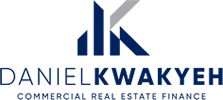
In commercial real estate “The capital Stack” refers to the combination and organization of capital used to purchase a commercial real estate asset. The Capital stack identifies who has the rights (and in what order) to the income and profits generated by the property throughout the hold period and at the sale. The Capital Stack also defines who has rights to the physical asset in case of a default.
Traditionally, there are two main types of capital:
Equity: which represents an ownership interest in the asset
Debt: A loan given to the equity ownership and typically collateralized by the asset itself or other assets of the owner.
Seniority and Risk:
The Capital stack outlines the relationship between debt and equity. The lower down on the stack the lower the risk to capital, and vice versa. As you move up in the stack, the risk and potential returns increase accordingly. This relationship is also described as seniority.
Equity: The top of the capital Stack
Equity owners are at the top of the capital stack and are in the riskiest position; they are last to be paid back. Because of this, equity investors typically require the largest returns to compensate for that risk. Equity investors, unlike debt, participate in the success of the investment, meaning that their upside or potential returns are not capped but can increase or decrease depending upon the performance of the investment. Because equity investors are owners of the asset there is no fixed term for the investment; full payout only occurs when the asset is sold or an individual investor sells his/her ownership interest.
In almost all real estate deals, there is a sponsor (often a manager or developer) that contributes a small portion of the equity and is responsible for the management and performance of the actual investment. The sponsor will raise additional equity from investors who take a senior position within the equity itself, frequently receiving a preferred return and first payback rights.
Senior Debt: The foundation of the capital stack
Debt is secured by a mortgage or deed of trust on the property itself, so if the borrower fails to pay the lender can take title to the property. Debt is always at the bottom of the capital stack and therefore senior to equity. Meaning that debt has priority in terms of monthly or quarterly payments from cash flow . Because debt investors are senior to everyone else, they carry the least amount of risk along and therefore charge the lowest interest rate. in the event of a default and typically charge borrowers the lowest interest rates.
What is in between? Preferred Equity
As financing for real estate deals has become more complex, there have been additional types of capital added to the stack that often act as a hybrid between equity and debt. This category is often referred to as mezzanine debt or preferred equity. As a hybrid structure, this type of investment is senior to traditional equity investment but subordinate to the debt. Often the return structure is also a hybrid between true equity or debt, where mezzanine/preferred equity investors receive a fixed annual payback over a specific investment term but potentially can participate in the upside or continued success of the investment.
Each real estate deal is unique, and the factors that contribute to the potential risks and returns vary. The structure of the capital stack will therefore also vary from deal to deal. As an investor, it is important to fully understand the potential risks at each point in the stack and also have a clear outline of exactly what returns you are entitled to. Not all investment structures are suitable for all investors, as with more complexity also comes more risk and the potential for a complete loss of an investment.




